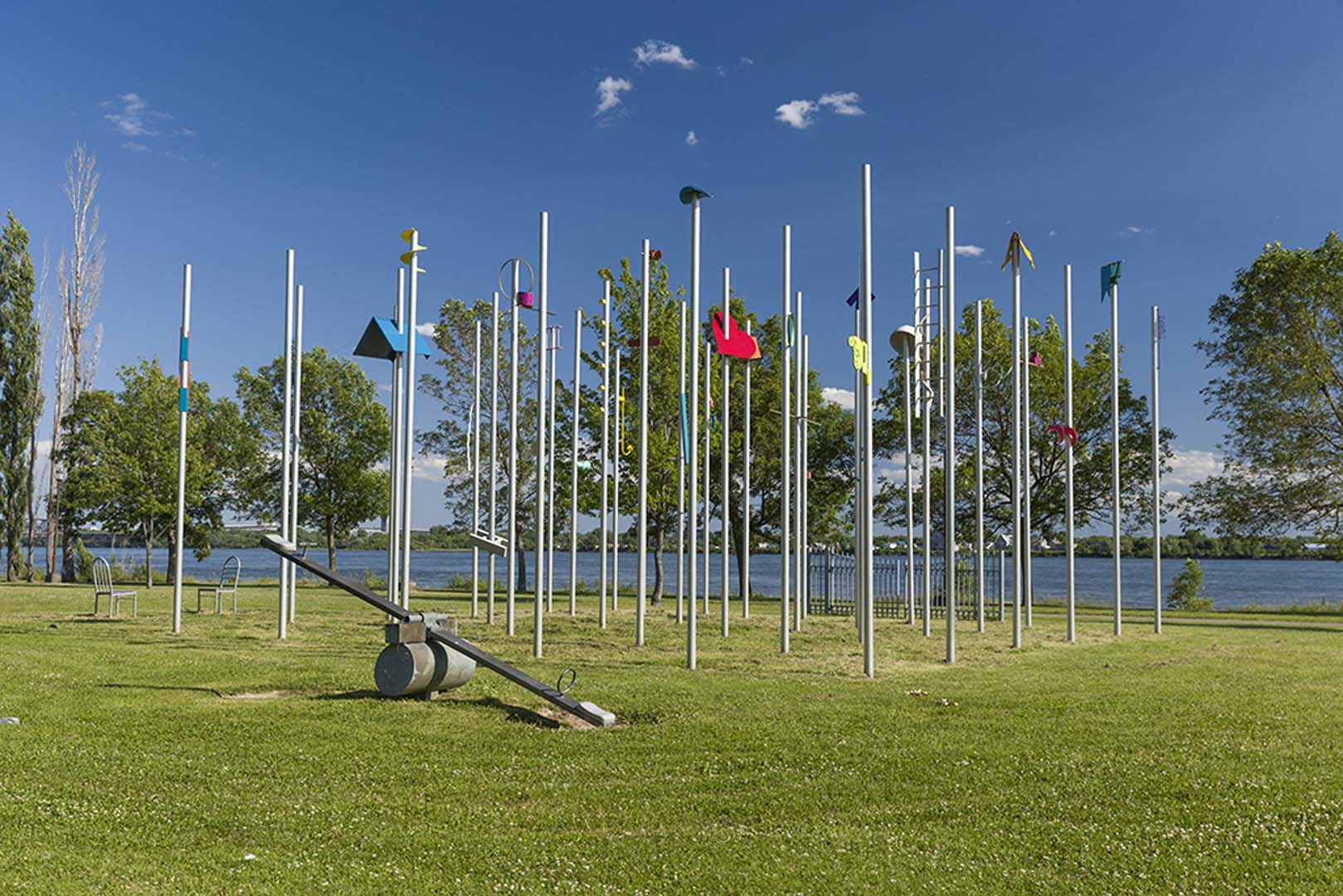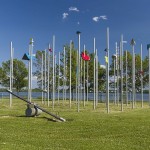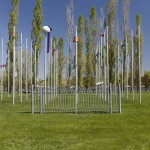

The Quebec artist Michel Goulet was born in 1944 in Asbestos and studied at the Université de Sherbrooke and the Université du Québec à Montréal. He has pursued a dual career as an internationally renowned artist and an educator, teaching first at the University of Ottawa and later at the Université du Québec à Montréal. He is recognized on the international art scene for his sculptures and permanent public art works, but also for his set designs for theatre and opera.
He has shown his work in numerous solo and group exhibitions, and has represented Canada at the Venice Biennale (1988). The Musée d’art contemporain de Montréal mounted a retrospective of his work in 2004.
Michel Goulet has received a number of honours, including the Prix Paul-Émile-Borduas, the highest distinction awarded to visual artists by the Quebec government (1990), and the Governor General’s Award in Visual and Media Arts (2008). He was made an Officer of the Ordre national du Québec in 2018.
Artwork description
On the large jetty between Lake Saint-Louis and the canal is a garden made of 36 masts to which are attached colourful objects serving as flags. Tools, instruments, architectural elements, and signs of all sorts greet viewers who stroll among these playful flagpoles. The masts, precisely aligned in six rows like a quadrant of a Cartesian plane, are surrounded by a circular podium, a seesaw, two chairs set face to face, and a gate left ajar.
Set within a vast open space and composed of these unlikely “flags,” the installation resembles an improbable United Nations Plaza. The podium, chairs, and seesaw evoke having a voice, encounters, and friendliness. The colourful objects, practical or playful in nature, make this public area a familiar place where people find common symbols. Thus, the components of the artwork converge, in the spirit of bringing people together, to celebrate a sense of community.
Détour: le grand jardin results from a displacement of everyday elements into the public space to change their use. This approach is the cornerstone of Goulet’s production of works of public art, which has extended over more than three decades.




